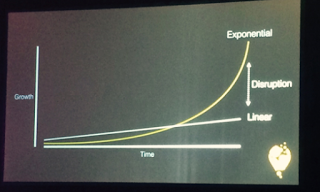Long Form Quality, Short Form Research

Quality of Long Form Journalism in Short-Form Research
I am a fan of long-form journalism. The New York Times is *my* newspaper. Although I do read the NY Times on my Nook when I'm traveling, I prefer to savor the best journalism I've found in its conventional form. Over the course of each week, I work my way steadily through the Sunday issue of the Times, snatching time here and there to read choice articles from start to finish. The experience is an intellectual treat akin to an everlasting memory I have of a salad-plate sized lollipop I got during my first trip to Disneyland when I was seven years old. I never completely finished that candy spiral of grape-flavored sweetness. Doubtless, one parent or the other made it disappear after a respectful interval. And so, too, the stacks of New York Times must eventually make their way to the recycling bin. But not until I have built a pile of tear-outs and must-reads that threaten to undermine my careful filing system.
Increasingly, I find articles about big data, digital privacy, and social media in The New York Times. I am struck by one factor above all. The NY Times journalists know how to tell a story. Yes, they *report* a story in the conventional way, answering all the readers' anticipated questions of what, when, who, how, and why. But the fact is, the stories reflect the opinions of the journalists in a way that may not have once been considered *good journalism* in the traditional sense. The new Public Editor of The New York Times, Margaret Sullivan, has acknowledged this dilemma of contemporary journalism: How can a journalist tell a good story and not reveal their own opinion? And should they even try?
The burgeoning co-participation of consumers and companies in social media networking belies an intolerance for marketing as it once was. Consumers are expecting and demanding more transparency from the companies that produce the brands they enjoy. Most consumers will choose not to spend time reading a long-form story, but they do expect the shorter brand stories they read or view to be as authentic and balanced as the journalistic perfection of a long-form story in The New York Times.
There are more well-informed and skeptical consumers in the marketplace than ever, and - stating the obvious - it is increasingly difficult to convincingly market to them. A number of presenters at The Future of Consumer Intelligence conference promise to suggest strategies for telling brand stories in a way that consumers will find acceptable and that will build trust in the brand and the people who are the company. These sessions promise to be exciting and informative. I trust the strategies market researchers learn at the conference will hit our collective sweet spot and sustain our practice for a lasting interval of time.
See you there.
~ Gigi DeVault
Guide to Market Research
About.com
http://marketresearch.about.com/